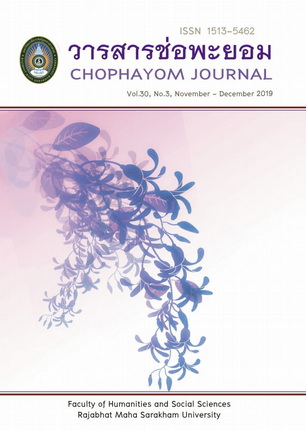A Study on Governance Mechanisms for Cross-border Shipping Business in Lancang–Mekong River Basin
Keywords:
Lancang-Mekong river basin, cross-border cooperation, shipping resources, governance mechanismAbstract
In the context of the “Belt and Road Initiative”, the Lancang-Mekong cooperation mechanism has integrated “the interconnection” into five directions of cooperation, which puts forward new requirements for shipping management of the Basin. Based on the mixed governance theory, we propose “mixed governance mechanism”, which is to use different governance methods including the bureaucracy, market and network governance styles to solve the
corresponding problems in different stages of cross-border shipping development in the basin. The mechanism is designed from four levels: central government, local government, market, and society. Besides, the mechanism gives more reasonable jurisdiction to wading enterprises, citizens, non-governmental organizations, media and other non-government entities to overcome the dilemma of cross-border shipping cooperation. Keywords : Lancang-Mekong river basin, cross-border cooperation, shipping resources, governance mechanism
References
2. Ren M., On the surrounding international environment and opening-up strategy of Southwest China[D]. Shanghai: Fudan University, 2001.
3. Ruan S.Y., Li Y.W., A study on the construction of Lancang–Mekong international waterway[J]. Guangxi Social Sciences, 2016(6):52-57.
4. Peng Z.H., Cooperation and development of international shipping business in Lancang–Mekong River[J].Yunnan Communication Science and Technology, 2003, 19(6):49-52.
5. He D.M., Rational utilization and coordinated management of cross-border water resources in international rivers [M]. Beijing: Science Press, 2006:150.
6. Lu G.S., Jin Z., “Lancang–Mekong Cooperation Mechanism” Construction: Causes, Difficulties and Paths[J]. Journal of Strategy and Decision-Making. 2016(03):22-38.
7. The Status Quo, Problems and Thoughts of International Poverty Reduction Cooperation in Lancang–Mekong Subregion[J]. Journal of Shenzhen University (Humanities & Social Sciences), 2017, 34(3):106-112.
8. Oliver E. Williamson. Comparative economic organization: the analysis of discrete structural alternatives[J]. Administrative science quarterly, 1991, 36(2):269-296.
9. Michael Polanyi, The Logic of Liberty[M]. Changchun: Jilin People's Press, 2002.
10. Chen H., Liao C.Q., Investigation and analysis of environmental impacts of international shipping business in Lancang–Mekong River[J]. Journal of Waterway and Harbor, 2008, 04:287-290+300.
11. Li W.A., Network organization: a new trend in organizational development[M]. Beijing: Economic Science Press, 2003.
12. Bradach J.L., Eccles R.G. Markets versus hierarchies: from ideal types to plural forms[J]. Annual review of sociology, 1989, 15(1): 97-118.
13. Tian X.Q., A study on trade and investment facilitation under the framework of Lancang–Mekong Cooperation[J]. China International Studies, 2018(2):55-67.
14. Liu Z.R., Zhou H.W., Hu X.Q., A study on multi-level cooperation mechanism of inter-temporal cross-border flood control in Heilongjiang river basin[J]. Chinese Journal of Population Resources and Environment, 2015, 25(3):163-168.
15. Li G., A study on comprehensive control of rocky desertification in small watershed of Qingzhen City from the perspective of network governance[D]. Guizhou: Guizhou
University, 2010.
16. Chen P.Y., Zhu C.C., Capital flow and spatial pattern of the Belt and Road Initiative - Based on the theory of unbalanced geographical development [J]. Areal Research and Development, 2017(3).
17. Shi G L, Liu J. The dialectic study of macro-administration, Strategy management and top design:concurrently discuss the reformational sense of top design[J]. Academic research, 2011, (10):49-54.
18. Yan X., The construction of the community of destiny in Lancang–Mekong River under the background of the Belt and Road Initiative[J]. Academic Exploration, 2017(9):46-51.
19. Cheng X.Y., Non-traditional security cooperation between China and Southeast Asian countries under the background of the Belt and Road Initiative[J]. South and Southeast Asian Studies, 2018(1):99-114.
20. Ma C.F., A study on the countermeasures for the development of shipping business in Lancang–Mekong River under the new situation[D]. Chongqing: Chongqing Jiaotong University, 2015.






